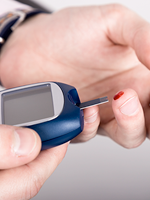Identifying low-cost medication alternatives can be time-consuming and is often therefore not followed by clinicians. A group of pharmacists led by Nicole Allie, PharmD, CGP, at Atrius Health, Watertown, MA, instituted the Chart Flag Service, a program designed to alert prescribing providers, in real time, on appropriate, lowcost medication alternatives.
This service involves a monthly list of patients with upcoming appointments who are prescribed nonpreferred medications. If the pharmacist determines an alternate preferred medication is appropriate for the patient, the clinician is notified by e-mail the day before an appointment and via notations in the clinician’s electronic schedule.
To evaluate the effectiveness of the Chart Flag Service at Atrius Health—an alliance of 5 multispecialty groups serving approximately 700,000 patients at 24 eastern Massachusetts sites—a survey was sent to 178 clinicians and 12 clinical pharmacists.
Overall, a 2-week analysis showed significant cost-savings, with an average cost-saving of $78.33 per lower-cost medication recommendation. The total annual savings for the group of patients included in this analysis was estimated at $51,014. A conservative estimate of the total savings for the program for 1 year is approximately $850,000.
Of the 25% of clinicians who responded to the survey, 80% found that a recommended medication switch could be completed in ≤5 minutes. Clinicians followed 31.1% of the medication-switching recommendations, and the program was considered useful by 84% of the responding clinicians.
Alternate medications were considered appropriate for 30.6% of the 849 patient appointments. The service was considered useful or very useful by 83% of clinical pharmacist respondents. [Allie N, Lubelczyk E, Robin S. Success with electronic chart flags to alert clinicians about medication cost-savings opportunities at the time of patient visits.]



